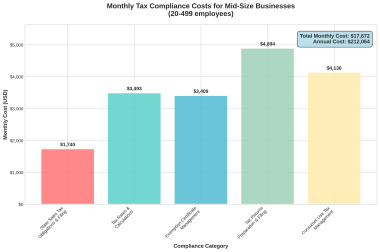Introduction
In today’s rapidly evolving AI landscape, businesses are constantly seeking ways to enhance their applications with intelligent capabilities. One of the most significant challenges in this journey has been the fragmented nature of integrations between AI models and the various tools and data sources that power modern SaaS applications. Enter the Model Context Protocol (MCP) – a revolutionary standard that is transforming how AI systems connect with external tools and data sources.
MCP represents a paradigm shift in AI integration, offering a standardized approach that eliminates the need for custom integrations with each new tool or data source. For SaaS businesses looking to leverage AI capabilities, understanding MCP and the available solutions is becoming increasingly crucial for maintaining competitive advantage and delivering enhanced user experiences.
This comprehensive guide explores what MCP is, how it works, and analyzes the top 15 MCP solutions available for SaaS businesses. We’ll examine their features, pros and cons, pricing structures, and provide practical examples of how each can be implemented in real-world scenarios. Whether you’re a developer, product manager, or business leader, this article will equip you with the knowledge needed to make informed decisions about incorporating MCP into your AI strategy.
What is Model Context Protocol (MCP)?
Model Context Protocol (MCP) is an open standard that standardizes how applications provide context to Large Language Models (LLMs). Developed by Anthropic, MCP serves as a universal protocol for connecting AI systems with data sources, replacing fragmented integrations with a single protocol that streamlines how AI assistants like Claude or GPT can interact with external tools and databases.
At its core, MCP consists of three fundamental components that enable this seamless interaction:
1. Host: The AI application or assistant that seeks to connect with external data sources. The host initiates communication by requesting specific information or actions from other systems.
2. Client: Embedded within the host, the client acts as the intermediary that understands and “speaks” the MCP language. It manages the connections and translates requests and responses between the host and server.
3. Server: The server represents the external system being accessed, which could be anything from a CRM to a database. It must be configured to support MCP, thereby exposing certain functions or pieces of data securely.
This architecture functions in a streamlined manner which can be likened to a conversation among three parties: the AI (host) asks a question, the client interprets it, and the server responds with the requested information. Such a framework enhances the utility and security of AI interactions, boosting scalability and adaptability across various tools essential to business operations.
The significance of MCP lies in its ability to standardize these connections, eliminating the need for developers to create custom integrations for each new tool or data source. This standardization not only reduces development time and costs but also enhances the capabilities of AI systems by providing them with secure access to a wider range of data and functionalities.
For SaaS businesses, MCP offers a powerful way to enhance their applications with AI capabilities while maintaining control over data access and security. By implementing MCP, businesses can create more intelligent, context-aware applications that deliver enhanced value to their customers.
Figure 1: What is Model Context Protocol (MCP) and how it works in AI businesses
How MCP Works in SaaS Businesses
Implementing MCP in a SaaS business environment creates a seamless bridge between AI systems and the various tools and data sources that power modern applications. The workflow typically follows these steps:
1. Connection Establishment: The AI assistant (host) initiates a connection to an external tool or data source through the MCP client.
2. Authentication and Authorization: The MCP server verifies the request and ensures that the AI has the necessary permissions to access the requested data or functionality.
3. Data Exchange: Once authenticated, the AI can request specific information or actions from the external system, which the server processes and returns the results.
4. Context Integration: The AI incorporates the received information into its context, allowing it to provide more informed and relevant responses to users.
5. Action Execution: Based on the integrated context, the AI can take appropriate actions, such as updating records, sending notifications, or generating reports.
This standardized approach offers several key benefits for SaaS businesses:
– Reduced Development Overhead: By eliminating the need for custom integrations with each new tool or data source, MCP significantly reduces development time and costs.
– Enhanced AI Capabilities: With access to a wider range of data and functionalities, AI systems can provide more intelligent and context-aware responses and actions.
– Improved Security: MCP includes built-in security features that ensure AI systems only have access to the specific data and functionalities they need, reducing the risk of unauthorized access.
– Scalability: As businesses grow and their needs evolve, MCP makes it easier to integrate new tools and data sources without requiring extensive redevelopment.
– Future-Proofing: By adopting an open standard like MCP, businesses can ensure their AI integrations remain compatible with future developments in the AI landscape.
Top 15 MCP Solutions for SaaS Businesses
1. Stripe MCP
Figure 2: Stripe MCP header from documentation
Stripe MCP enables AI systems to securely connect with Stripe’s payment processing platform, allowing for seamless integration of payment capabilities into AI-powered applications.
Key Features:
– Real-time transaction data access
– Financial analyses and customer payment history retrieval
– Automated payment inquiry resolution
– Payment pattern analysis for business insights
Pros:
– Streamlined financial workflows
– Enhanced AI payment capabilities
– Real-time data access
– Improved customer support through automated inquiry resolution
Cons:
– Potential security concerns with sensitive financial data
– Implementation complexity for organizations without technical expertise
– Possible integration challenges with existing systems
Pricing:
Based on Stripe’s standard pricing model, typically 2.9% + $0.30 per successful card charge, with potential additional fees for MCP-specific features.
Example Scenario:
A SaaS company offers tiered subscription plans with different feature sets. By implementing Stripe MCP, they can allow their AI assistant to access real-time subscription data, enable customers to manage subscriptions through natural language requests, automatically generate financial reports, identify at-risk customers based on payment patterns, and create custom payment plans for enterprise customers.
2. Notion MCP
Figure 3: Notion MCP header from documentation
Notion MCP connects AI assistants to Notion workspaces, enabling them to interact with Notion databases, pages, and blocks for enhanced knowledge management and content organization.
Key Features:
– Workspace connection
– Database viewing and searching
– Page and content creation
– Content organization and management
Pros:
– Open-source and free to use
– Works with various AI assistants
– Enhances productivity through AI-powered content management
– Enables task automation and voice command interactions
Cons:
– Requires technical setup with Node.js
– Limited by Notion API capabilities and rate limits
– Potential security concerns with API key management
Pricing:
Free (open-source), with underlying Notion pricing applying for the platform itself (Free, Plus at $10/seat/month, Business and Enterprise tiers available).
Example Scenario:
A product development SaaS company uses Notion for documentation and project management. With Notion MCP, they enable their AI assistant to search and update product documentation in real-time, allow team members to request information through natural language queries, automatically organize meeting notes, generate project status reports, and maintain a dynamic FAQ system.
3. Airtable MCP
Figure 4: Airtable MCP header from GitHub repository
Airtable MCP provides tools for programmatically managing Airtable bases, tables, fields, and records through AI assistants, enabling sophisticated database interactions through natural language.
Key Features:
– Base and table management
– Field creation and modification
– Record operations (add, update, delete, search)
– Complex table building in stages
Pros:
– Specialized implementation minimizes failure rates for complex tables
– Comprehensive field type support
– Multiple installation methods
– Active community development
Cons:
– Requires Node.js environment
– Needs Airtable API key with proper permissions
– Limited by API rate limits
– Configuration complexity
Pricing:
Free (open-source), with underlying Airtable pricing applying (Free tier with 1,200 records per base, Plus at $10/month per seat, Pro at $20/month per seat, Enterprise with custom pricing).
Example Scenario:
A marketing SaaS platform uses Airtable to manage their content calendar. By implementing Airtable MCP, they allow their AI assistant to manage content through the production pipeline, automatically assign resources based on content type and deadlines, generate performance reports, identify content gaps, and manage approval workflows.
Comparing MCP Solutions for SaaS Businesses
When evaluating MCP solutions for your SaaS business, it’s important to consider several factors including features, integration complexity, pricing, and use case alignment. Below is a comparative overview of the top MCP solutions:
Figure 5: Comparison of top MCP solutions for SaaS businesses
Implementing MCP in Your SaaS Business: A Practical Example with Stripe
To illustrate how MCP can be implemented in a real-world SaaS business scenario, let’s examine a practical example using Stripe MCP with n8n, a popular workflow automation platform.
Example n8n Workflow with Stripe MCP Integration
Figure 6: Example n8n workflow with Stripe MCP integration
This workflow demonstrates how a SaaS business can automate subscription management using Stripe MCP:
1. Webhook Trigger: The workflow begins when a subscription event is received from Stripe (new subscription, upgrade, downgrade, or cancellation).
2. Stripe MCP Connection: The MCP node connects to Stripe’s API using the Model Context Protocol, enabling secure access to subscription and customer data.
3. Customer Data Retrieval: The workflow retrieves detailed customer information and subscription details through the MCP connection.
4. Subscription Status Check: The workflow determines the type of subscription event (new, upgrade, downgrade, or cancellation) and routes the process accordingly.
5. Action Execution: Based on the subscription status, the workflow executes appropriate actions:
– For new/upgraded subscriptions: Update CRM and send welcome emails
– For downgraded subscriptions: Update permissions and send plan change notifications
– For cancellations: Initiate retention workflows and send exit surveys
6. Analytics Update: Finally, all events are recorded in the analytics platform for reporting and business intelligence.
This workflow demonstrates how MCP simplifies the integration between AI systems and external services like Stripe, enabling sophisticated automation without requiring complex custom API integrations.
Benefits of Adopting MCP for SaaS Businesses
Implementing MCP in your SaaS business offers numerous advantages that can significantly enhance your operations and customer experience:
1. Standardized Integration: MCP provides a universal protocol for connecting AI systems with various tools and data sources, eliminating the need for custom integrations with each new service. This standardization reduces development complexity and ensures consistent behavior across integrations.
2. Reduced Development Time: By leveraging pre-built MCP servers for popular services, development teams can significantly reduce the time required to implement AI integrations. This accelerated development cycle allows businesses to bring new features to market faster and respond more quickly to changing customer needs.
3. Enhanced AI Capabilities: With access to a wider range of data and functionalities through MCP, AI systems can provide more intelligent and context-aware responses and actions. This enhanced capability translates to better user experiences and more valuable AI-driven features in your SaaS application.
4. Secure Data Access: MCP includes built-in security features that ensure AI systems only have access to the specific data and functionalities they need. This granular control reduces the risk of unauthorized access and helps maintain compliance with data protection regulations.
5. Scalable Architecture: As your SaaS business grows, MCP makes it easier to integrate new tools and data sources without requiring extensive redevelopment. This scalability ensures your AI capabilities can evolve alongside your business needs.
6. Future-Proof Solutions: By adopting an open standard like MCP, SaaS businesses can ensure their AI integrations remain compatible with future developments in the AI landscape. This future-proofing protects your investment in AI technology and reduces the risk of technical debt.
Conclusion
Model Context Protocol (MCP) represents a significant advancement in how AI systems integrate with external tools and data sources. For SaaS businesses looking to enhance their applications with AI capabilities, MCP offers a standardized, secure, and scalable approach that reduces development complexity while expanding AI functionality.
The 15 MCP solutions explored in this article provide a comprehensive toolkit for SaaS businesses across various domains, from payment processing and knowledge management to data analysis and workflow automation. By carefully evaluating these solutions based on your specific business needs, you can identify the most appropriate MCP implementations to enhance your SaaS offerings.
As the AI landscape continues to evolve, MCP is poised to become an increasingly important standard for AI integration. SaaS businesses that adopt MCP early will be well-positioned to leverage the full potential of AI technologies, delivering enhanced value to their customers and maintaining a competitive edge in the market.
Whether you’re just beginning your AI journey or looking to optimize existing implementations, understanding and leveraging MCP can help your SaaS business build more intelligent, context-aware applications that meet the growing expectations of today’s users.
References
- 1. Anthropic. (2025). Model Context Protocol. https://www.anthropic.com/news/model-context-protocol
- 2. GitHub. (2025). Model Context Protocol Servers. https://github.com/modelcontextprotocol/servers
- 3. Getguru. (2025). What Is Stripe MCP? Exploring the Model Context Protocol and AI Integration. https://www.getguru.com/reference/stripe-mcp
- 4. Notion Developers. (2025). Model Context Protocol (MCP). https://developers.notion.com/docs/mcp
- 5. GitHub. (2025). Airtable MCP. https://github.com/felores/airtable-mcp
- 6. MCP.so. (2025). Notion MCP Server. https://mcp.so/server/notionMCP






